Alpine A110 | Cars to be thankful for
Autumn has arrived for the A110 - grab one with both hands while you still can...
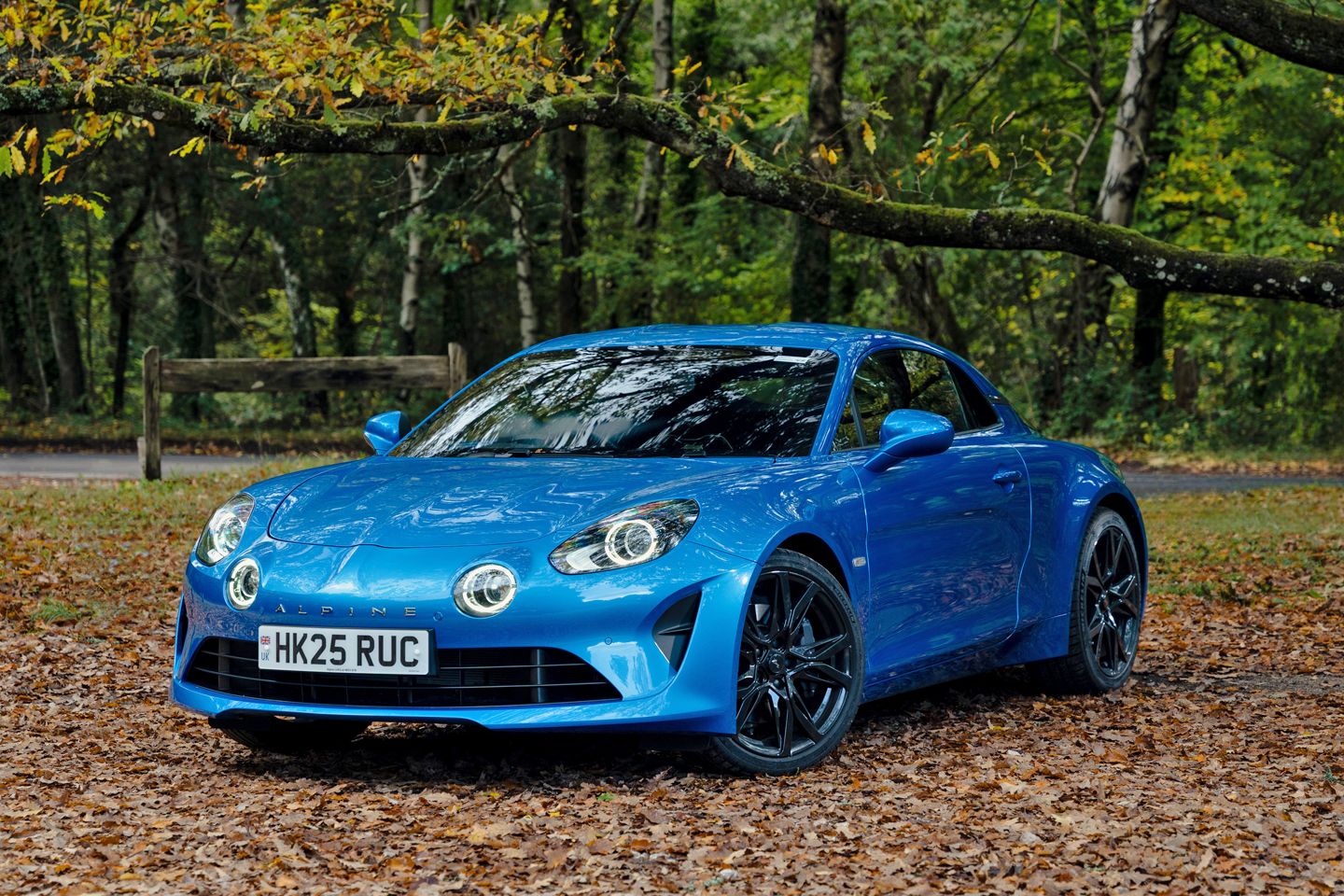
As Alpine reminded us just last week, the A110, arguably the new car we’re most thankful for, will very soon cease to be. We’ve known about its fate for quite some time, partly owing to its maker’s oft-repeated insistence that it needs to move onto a battery-powered replacement (another strategic masterstroke that might not survive contact with reality) and partly because it likes to remind us that there are still some available to buy - a state of affairs that says much about the model’s narrative arc in general.
In short, and for most of the time, it was brilliant. And where it wasn’t brilliant, it could be covered with a Gallic shrug. Additionally, not unlike the Mazda MX-5 or the Toyota GR86, it typically appealed to people who like driving almost exclusively for the sake of it - which, as we all know, is a small and fickle niche. Understandably, with one eye on recouping the investment necessary for a bespoke platform and modified factory, Alpine has spent the last few years fattening its margins with increasingly raw-edged variants. This has made the A110 leaner and faster, but also pricier and even rarer than it might have been.
Mercifully, it has opted to retain the option of an entry-level model till the bitter end - the original 252hp variant having barely changed in nearly a decade. And while we’re on record as fans of the A110 R, we’d cheerily concede that being £50k cheaper (yep) does cast the lower-powered car in an appealing light. Unsurprisingly, it is much the same light that Alpine originally conceptualised: that outright speed and power were less important than light-footedness and handling finesse. That if it built such a thing, the people would come.
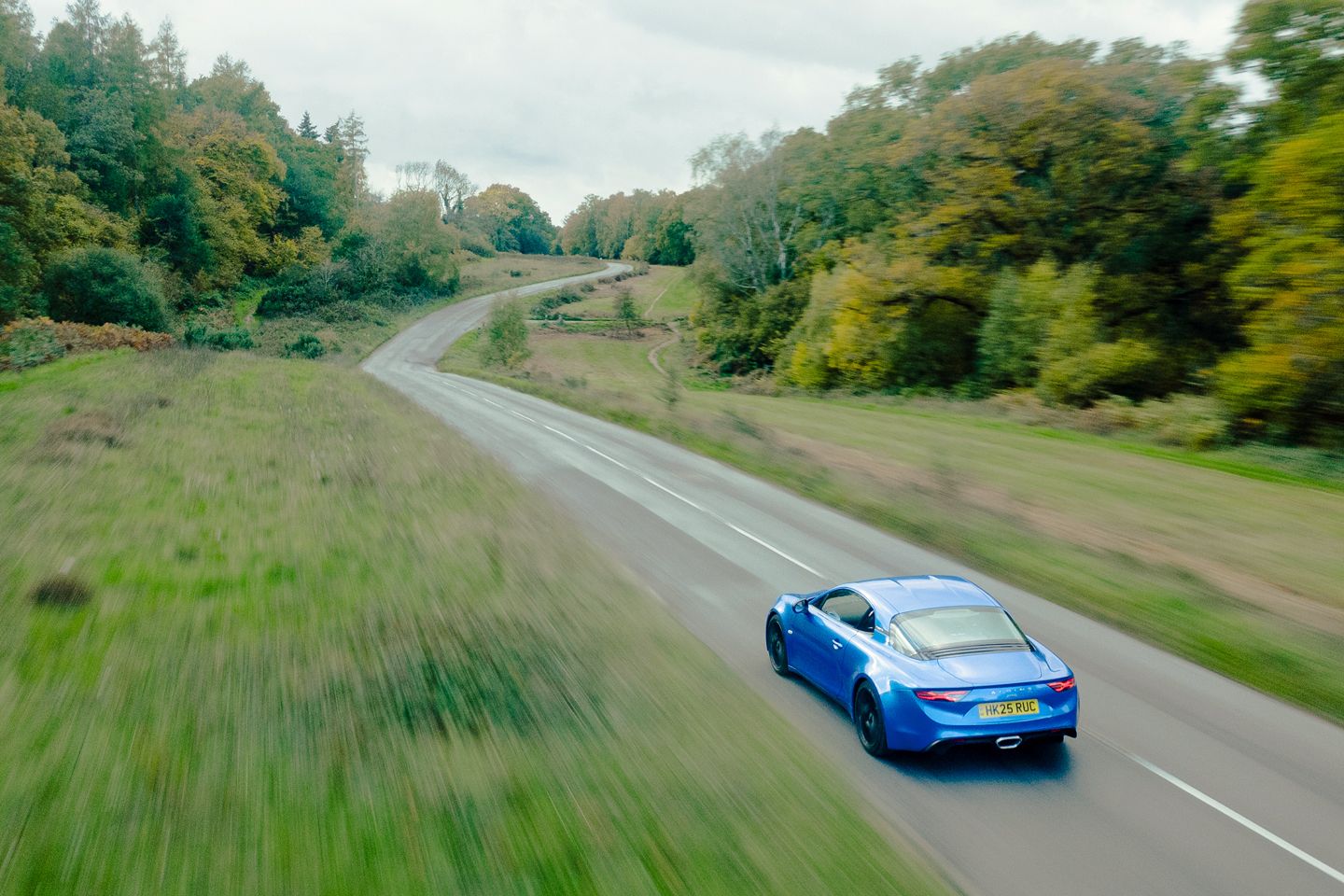

They did come, though the A110’s standing start didn’t do it many favours. Easy to see why Renault thought it had found the ideal partner in Caterham, a name that resonated in the UK and Japan, and could be relied upon to deliver some out-of-the-box cachet while it rebuilt the Alpine brand nearly from scratch in continental Europe. The thought of what might have been (for Caterham especially) still rankles - although the abrupt departure of its junior associate could hardly be said to have diluted the development of its underlying architecture, as it remains a peach.
Very few new cars these days so beguile you in terms of scale or deceptive simplicity. The A110 is only fractionally longer than 4 metres and significantly less than 2 metres wide. Its extrusions are bonded, riveted, in places (near the engine) welded, with pressed body panels atop. Aside from the steel used in its rivets and the plastic in its roof, it is predominately aluminium. It gets double wishbones front and back, with its turbocharged four-cylinder engine squeezed between the latter, driving the rear wheels via a seven-speed DCT. At the front, there is a 45-litre fuel tank, it helping to deliver a 44:56 weight distribution.
Even more appealing, back then and certainly now, is the amount of weight being distributed. A 1,102kg kerbweight was impressive back in 2017; in 2025, it seems almost baffling, and continues to make the most affordable Porsche Cayman - itself, of course, a carrier of the four-cylinder gene - look decidedly portly at 1,335kg. On the basis of their two-seat, mid-engined configuration and asking price (the latter remaining virtually in lock step), endless comparison of the two is another defining feature of the A110’s life cycle.

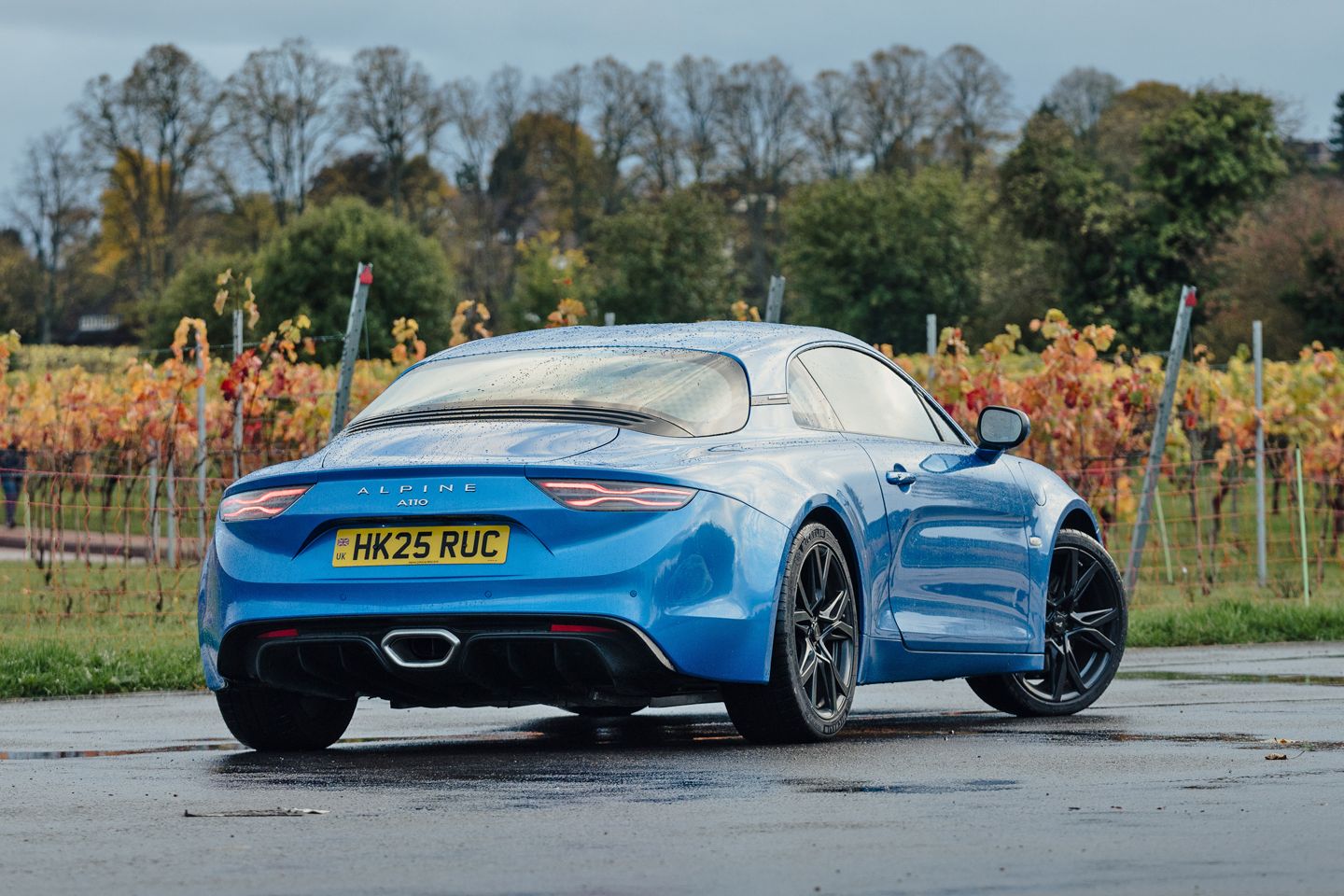
While it’s less than mesmerising 1.8-litre motor - a derivative of the long-running Renault-Nissan MR engine that also featured in the final R.S. Megane - has often been the A110’s undoing in side-by-side tests, the interior has had its critics, too. The starter model does without the nicer trim materials of the GTS or the stripped-out chic of the R, and Alpine certainly struggled to convince everyone familiar with Porsche’s fit and finish that Renault-grade plastics, a decidedly clunky HMI and occasionally ancient switchgear were appropriate for an upmarket sports car.
Needless to say, PH staffers being grizzled road warriors to a man, we’re precluded from moaning about the absence of cupholders in the A110 - though it probably is worth reiterating that there really isn’t anywhere to put anything, save for a cubby just big enough for some sunglasses, a perch under the centre console that’s good for nothing and a slot to house the keycard. Luggage space is similarly modest: there’s sufficient room (front and back) to just about cater for a weekend away, but your other half won’t be bringing her big suitcase or her ballgown.
Initially, selfishly (internally) you might question her physical presence, too, in strict payload terms. Because it must be said, in its default mode, and driven in a battery-powered era, the stock A110 does not exactly bristle with split-second verve. Tuning the car for low-rev usability and Elise-like parsimony does wonders for its about-town fuel consumption, though you’d imagine Alpine dealers spend half their day hustling prospective buyers away from urban roads, lest they dwell too long on the comparative laziness of the DCT or the car’s occasionally stiff-legged response to particularly choppy asphalt.

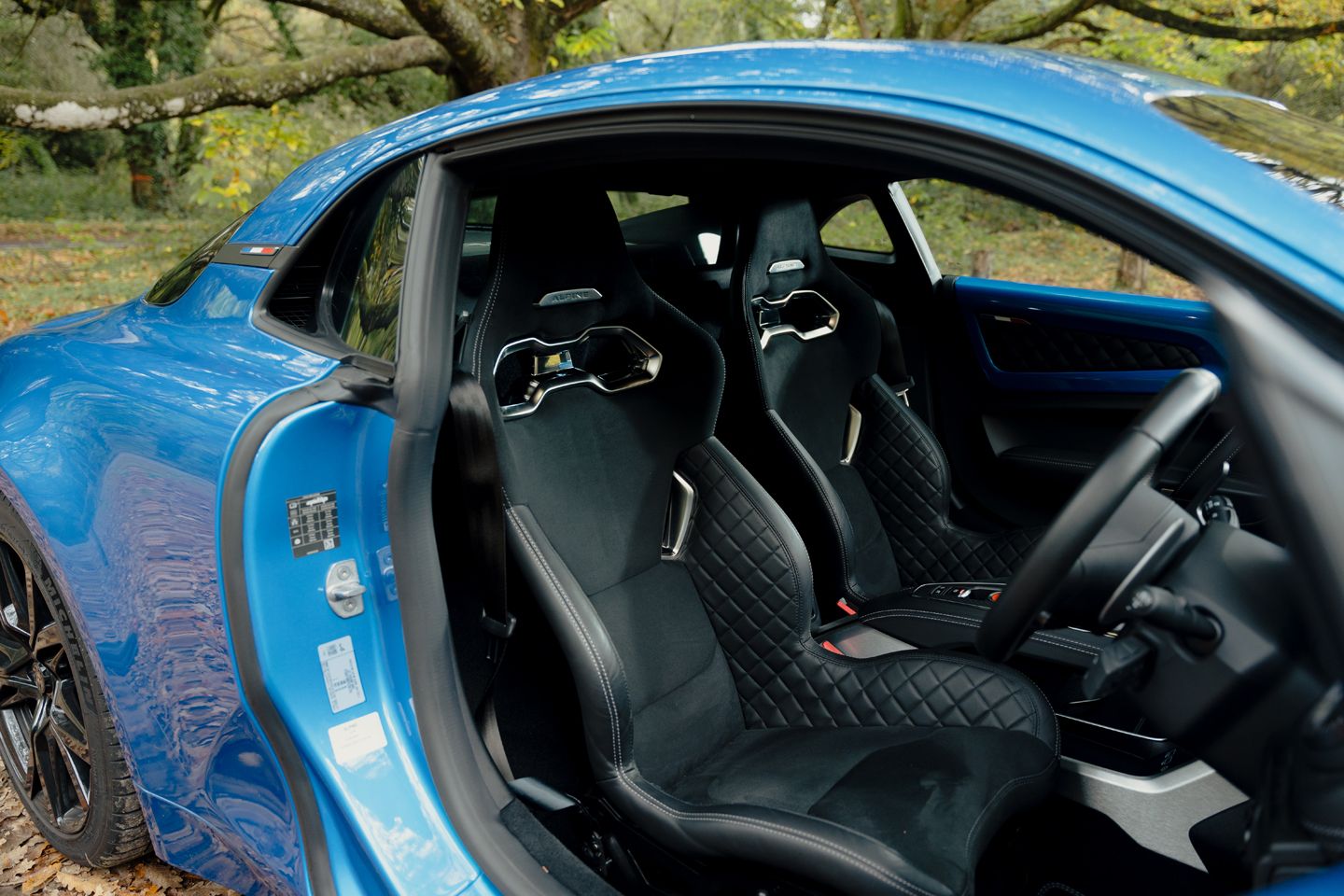
Indeed, while there is a Clark Kent aspect to the A110’s ease of use at slow speed, it tends to save all its specialness for above 30mph. Once you’re properly into the meat of its torque delivery, the car starts to sing in a way that eludes most modern cars. The chief source of all this goodness is hardly a mystery, after all the benefit of it weighing the better part of half a tonne less than a 992 Carrera is felt practically everywhere - but lightness alone does not fully describe just how fulfilling the cheapest A110 is to drive from A to B.
Crucially, and perhaps exclusively, at no point does the passively sprung car seem like a chore. Not just because it glides serenely, or turns quickly, or is brilliantly compact, or perfectly composed, but because it is a combination of all of these things, and as subtly alive to your inputs as the rudder of a dingy. Coaxing it this way and that never feels like a laboured overcoming of inertia or the end result of a million computations; truthfully, courtesy of delicate control surfaces, you drive with barely any effort at all, and yet at no point do you feel detached or disinterested. No car is better at harmonising with your level of interest - or rewarding it.
Granted, at no point is the engine compelling either. Or at any rate, it is not at the same superlative level as the rest of the A110. Alpine’s conviction that its sports car needn’t crush your thorax is a true today as it ever was, and this is a decent and dutiful four-pot, with power enough for 4.5-second-to-62mph pace (i.e. plenty enough on the road). But you don’t engage with it for its own sake, as you would a Porsche or BMW - you wind it up only to go more quickly, a symptom of its configuration you can take two ways.
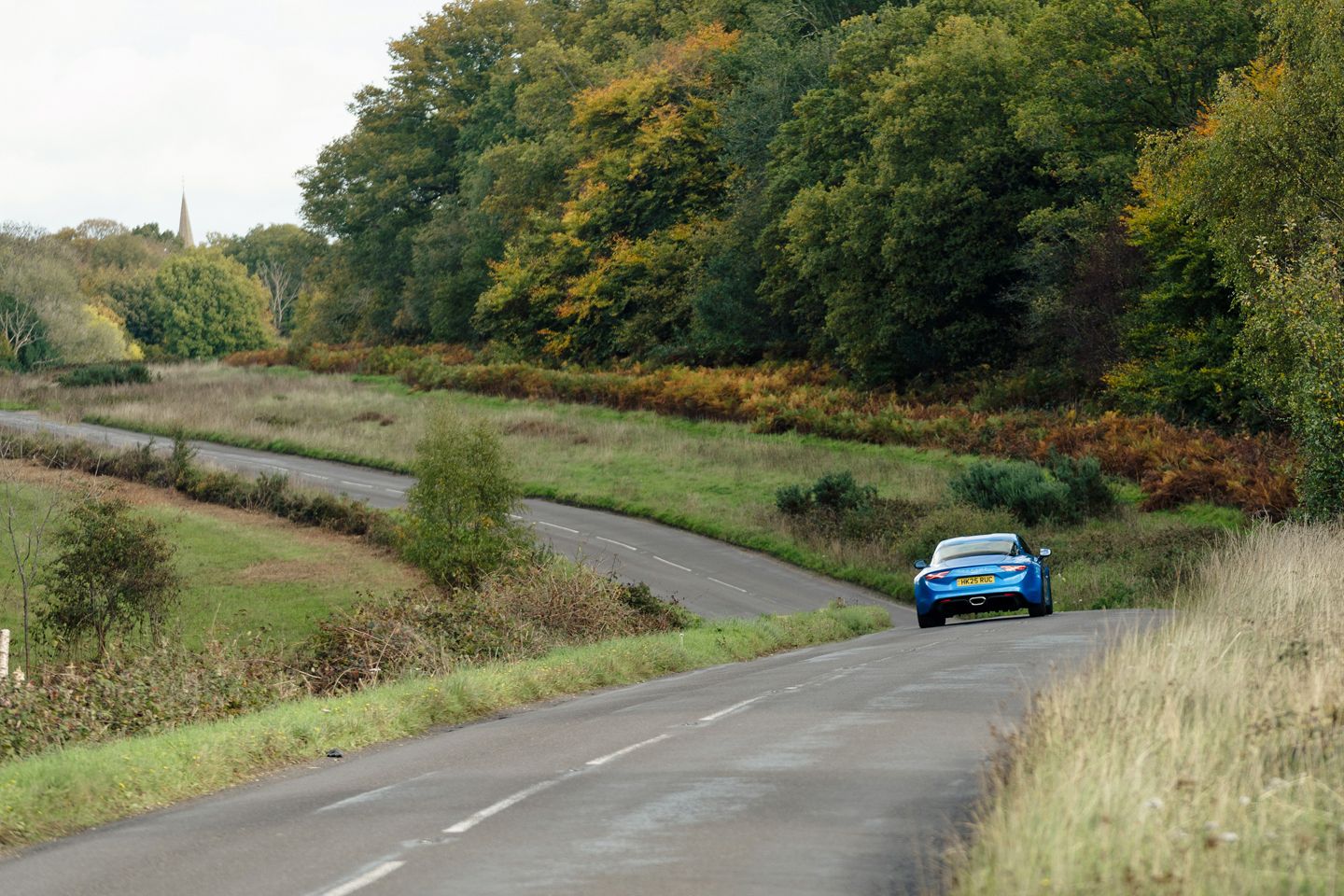
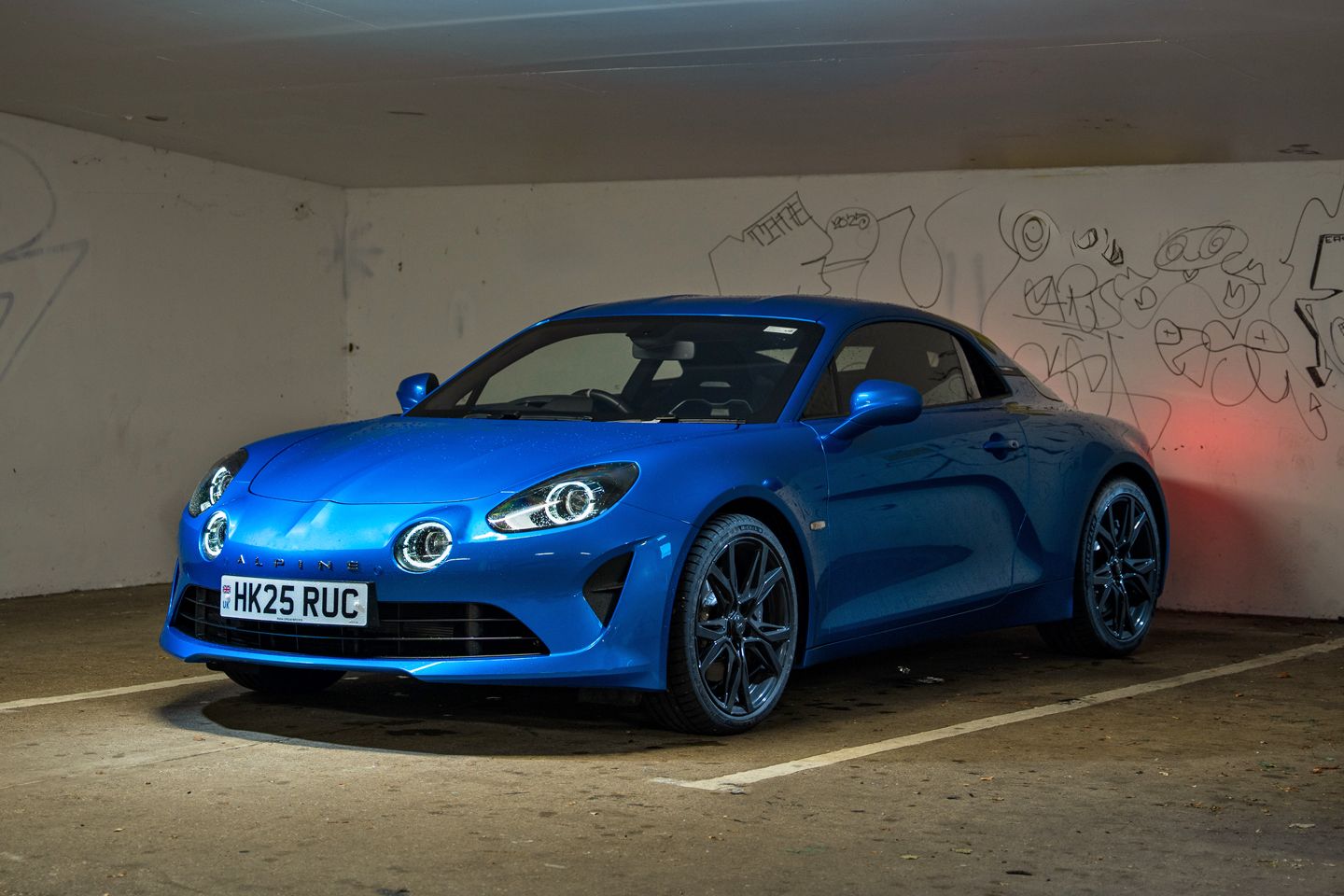
The first is to think it wanting, and ultimately inferior to like-minded rivals with either more cylinders or a clutch pedal or both. That side of the fence is certainly valid because we’ve subscribed to it several times over the years. The second, which, in light of 718 production winding up, seems more pertinent now than ever, is to celebrate the presence of any kind of unassisted petrol engine and fully embrace the means-to-an-end vibe that the A110 has advocated since day one.
We vigorously recommend you take the red pill. No new model left, not Lotus’s last gasp nor the (inevitably harder to live with) output of Caterham or Ariel, is better equipped to persuade you that agility and poise, and therein the dynamic advantages of sublimely balanced low weight, are the key to overall happiness. We can say this with confidence because the basic A110, essentially unchanged after all these years and offered for practically the same price, still does not require you to drive a single digit beyond the national speed limit for you to marvel at the way it all hangs together, as uncomplicated and moreish as sunshine. There are 1,750 left and counting. Very nearly now or never.
SPECIFICATION | ALPINE A110
Engine: 1.8-litre, 4-cylinder turbo
Transmission: seven-speed automatic, rear-wheel drive
Power (hp): 252@6,000rpm
Torque (lb ft): 239@2,000rpm
0-62mph: 4.5secs
Top speed: 155mph
Weight: 1,102kg
MPG: 42.2
CO2: 153g/km
Price: £55,160
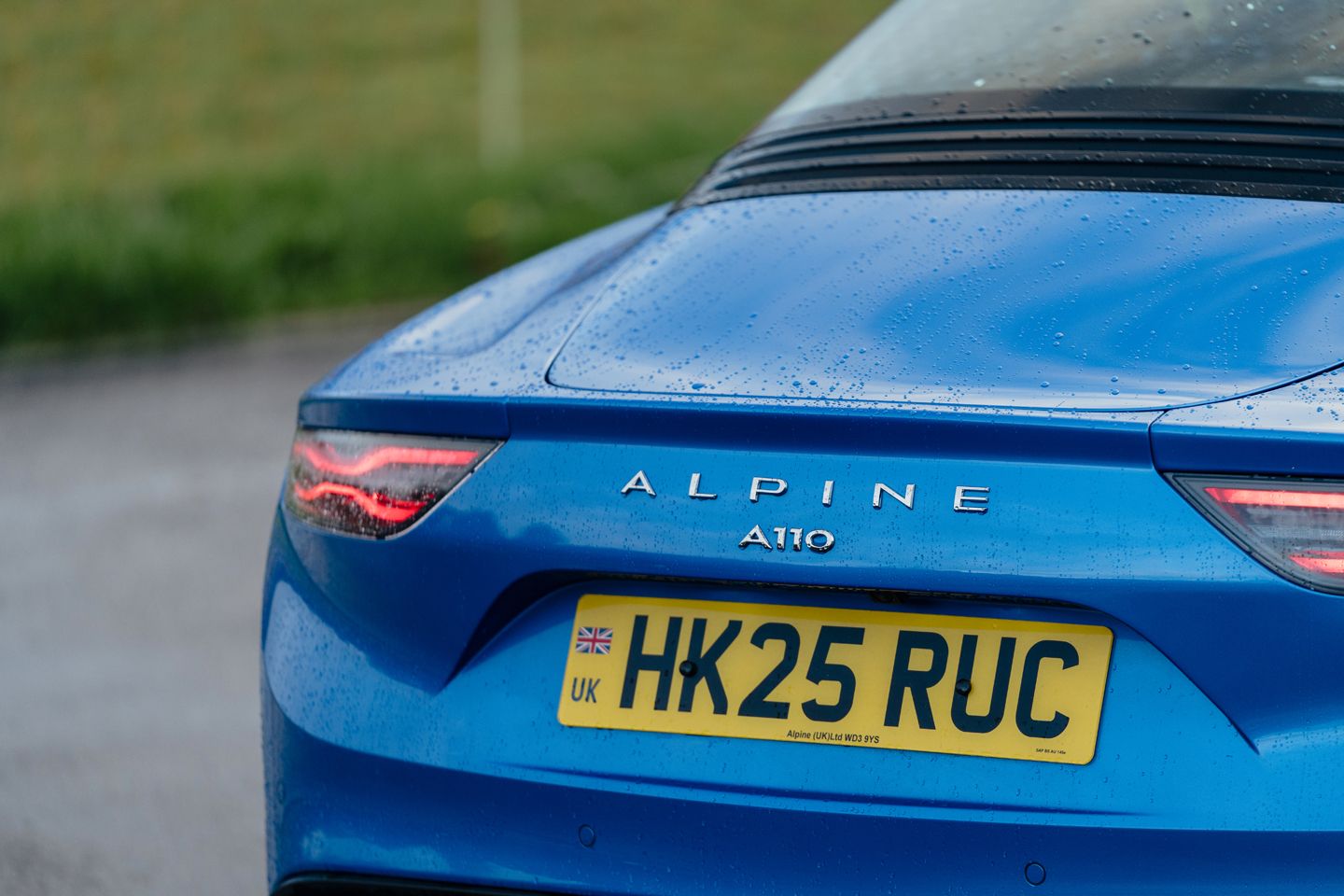
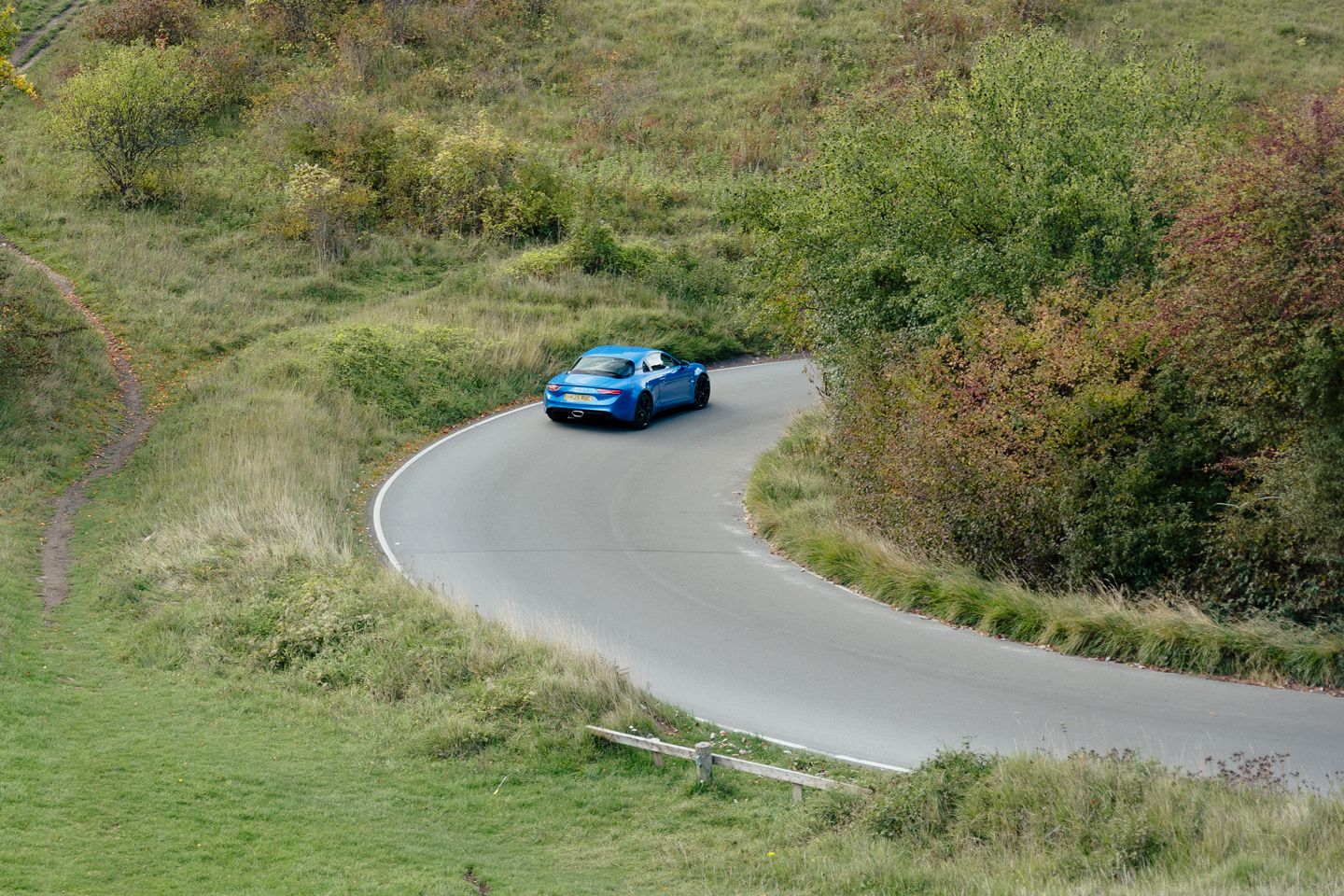

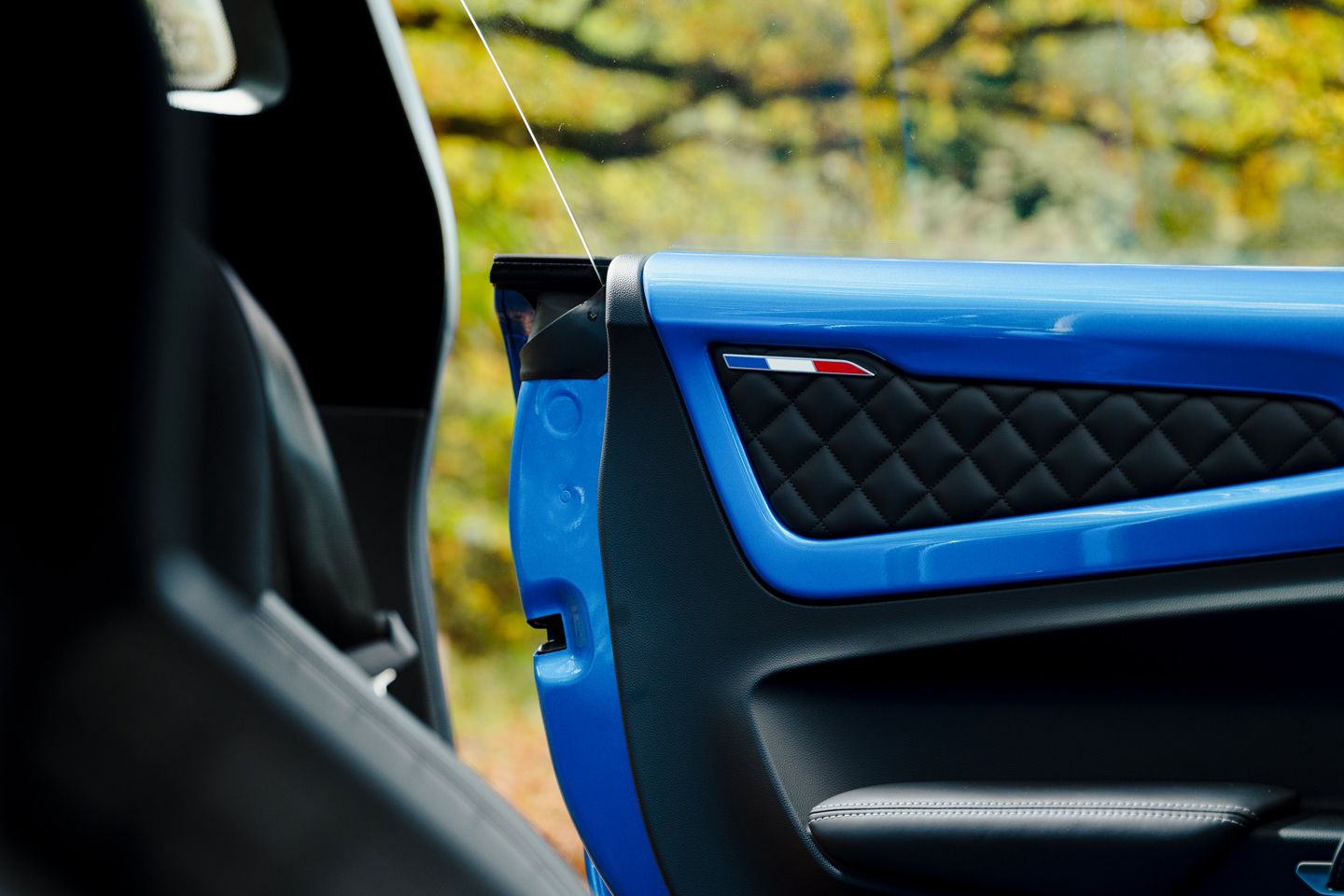
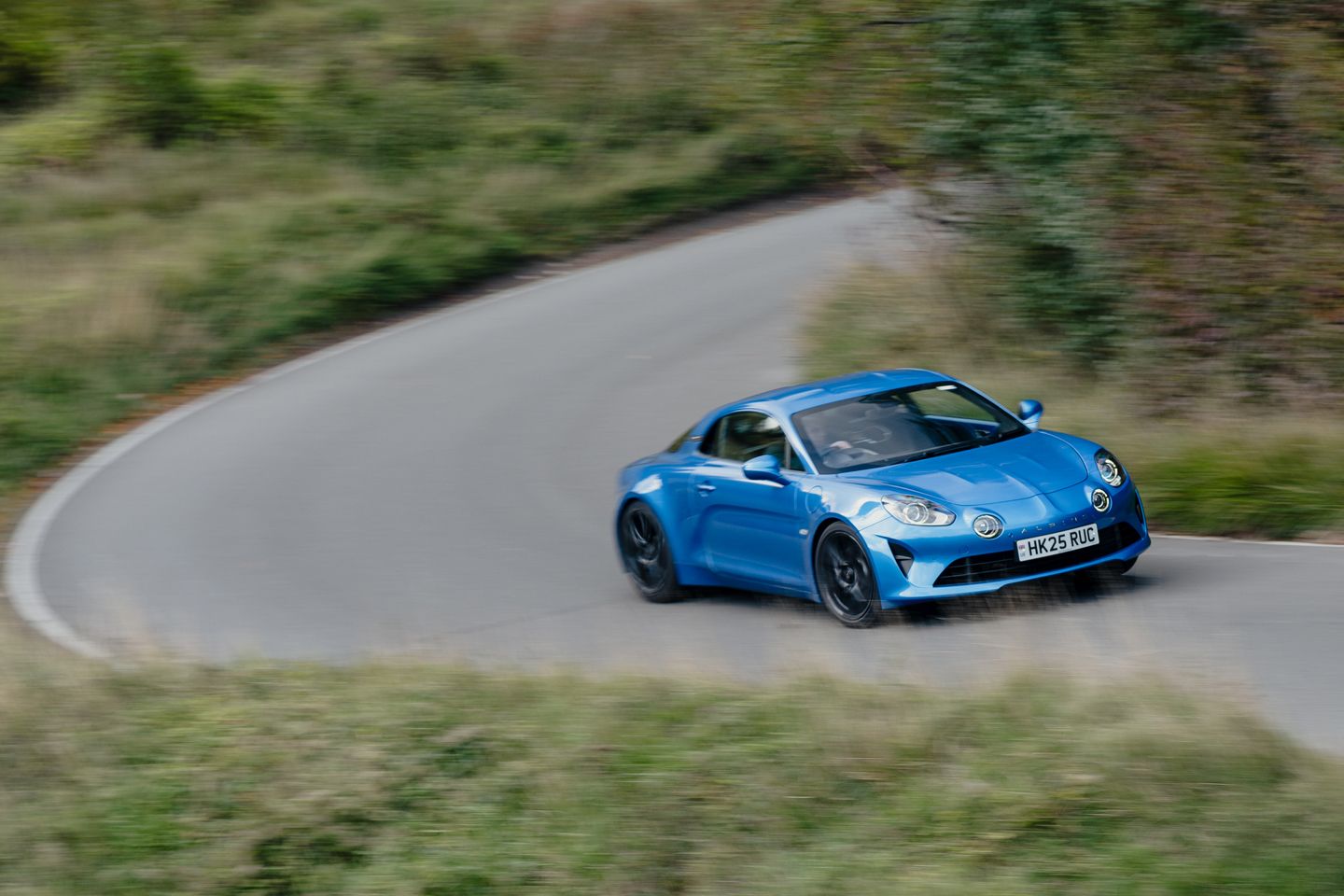


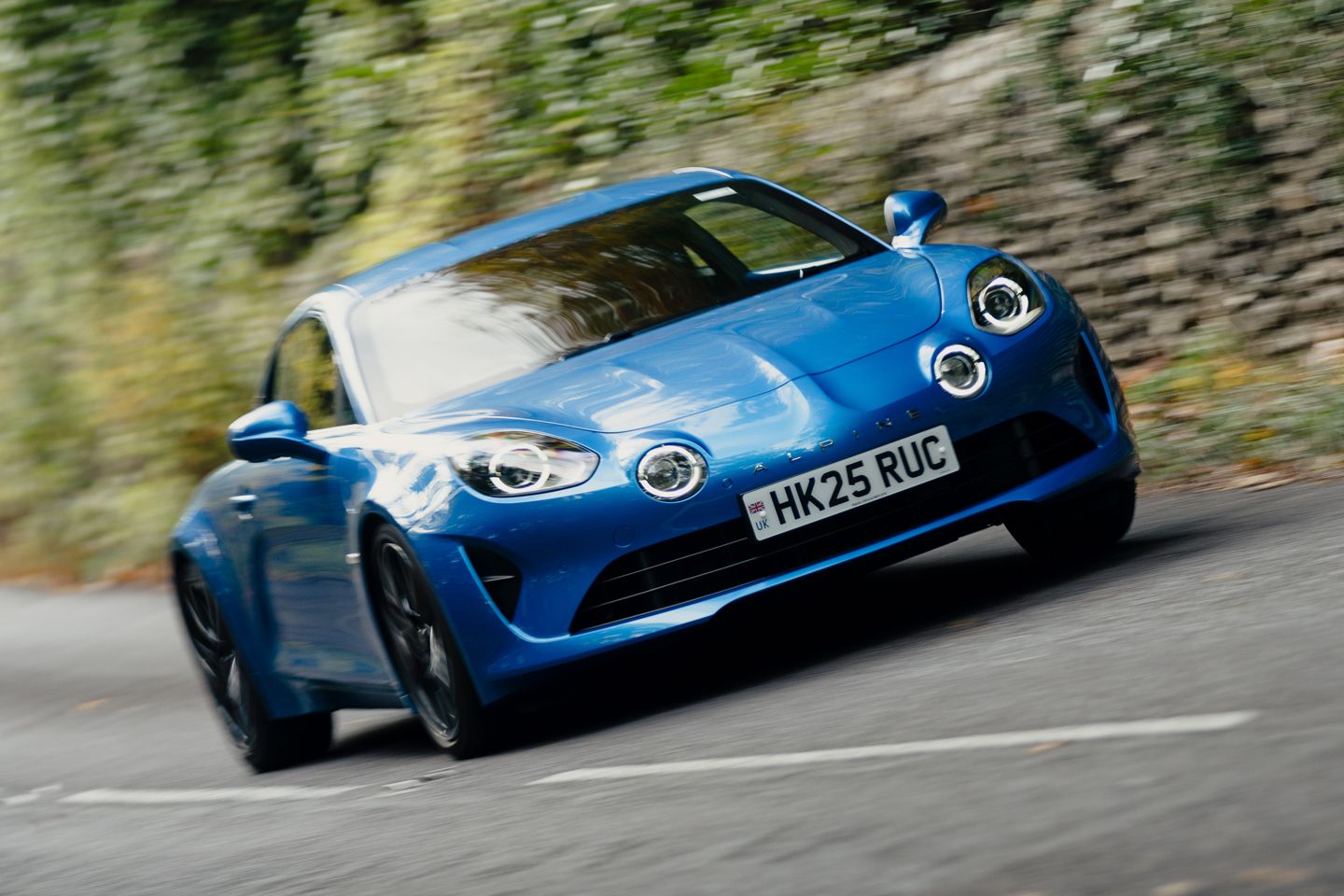
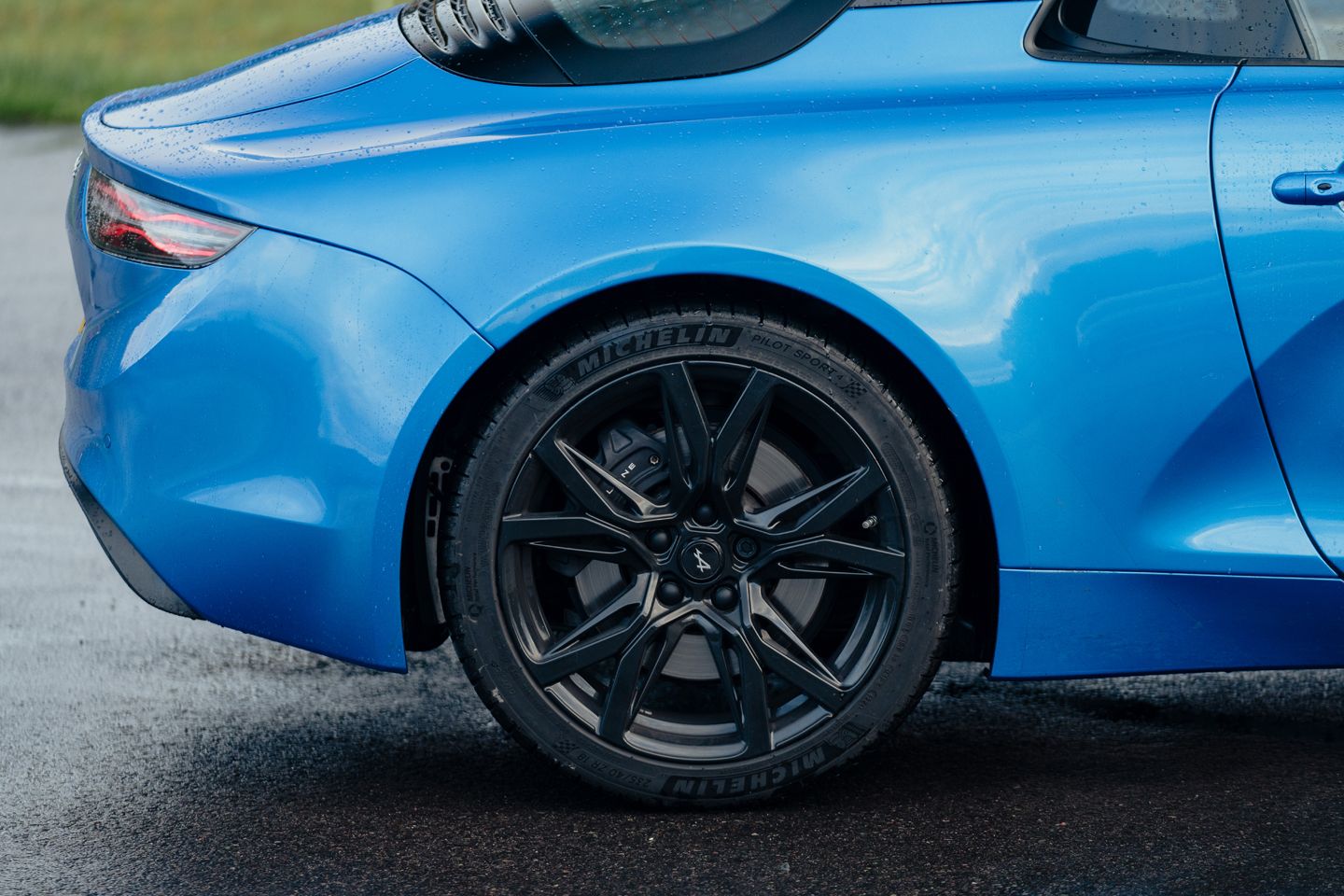
Two reasons why I didn't buy one (and bought an Exige V6 instead) - I think they really screwed up the styling at the back which I can't get over, and that it's turbocharged so doesn't have the throttle response that a light car deserves. Just my personal taste though - I can see why they've sold well and to get it down to 1100 kgs is a brilliant achievement.
If I recall correctly, according to David Twohig’s book (lead development guy on this, first Qashqui and Zoe) he mentioned that the initial body and chassis Caterham has come up with would fail crash tests miserably and start cracking in key areas after five years use! They had to chuck most of it out and start again.
Alpine's chief engineer, David Twohig, is on record saying that fitting a manual transmission to the A110 would require a wide transmission tunnel and mechanical linkages running from the interior to the rear transaxle. Any weight saved by offering a manual would be undone by the hardware and space it'd require. Since the A110's dual-clutch is operated totally by-wire, it allowed Alpine's engineers to make a smaller car, with less space between the driver and passenger. This is important because to fit double wishbones all around on a car of this size is not easy if you want to keep it compact and in particular, relatively narrow.
In addition, a modern dual-clutch transmission system itself (including all associated components, controls, and brackets) is actually lighter than a comparable manual system for an engine producing this type of power and would also appeal to a wider range of drivers (including those who are not "expert" drivers). As Renault do not have a suitable manual transmission in their parts bin to fit the mid-engined architecture of the A110, developing a unique manual transmission for a niche, mid-engine car would have been prohibitively expensive due to it being difficult to engineer the complex linkages and clutch hardware required to fit the physical space constraints of the transverse mid-engine layout.
It makes zero sense to build a car for such a niche market with a manual transmission when we all know no-one would buy it, particularly as it would have been significantly more expensive to buy the car making people complain that there was not enough 'bang for buck' performance for the price.

I've fallen in love with the A110 in the last fortnight. Always thought it was cool before, but now I really want one. Have really clicked with the styling and it would strike a good balance between fun/practicality/running costs for me. I've got over the autobox and 4pot too.
Just the purchase price that is the problem! Maybe this phase will pass for me.
Two reasons why I didn't buy one (and bought an Exige V6 instead) - I think they really screwed up the styling at the back which I can't get over, and that it's turbocharged so doesn't have the throttle response that a light car deserves. Just my personal taste though - I can see why they've sold well and to get it down to 1100 kgs is a brilliant achievement.

Largely ignored at the start despite the rave reviews. On sale pretty much unchanged for 8 years but sold in low volumes throughout. Reviews incrementally getting better as the competition moves on to be heavier and more complicated while the A110 has stuck to its original formula. A steady stream of people getting into them and seeing the light, spreading the word and keeping residuals up. And a lot more having jumped in and having no intention to sell (me..).
 Car 1 by Alex D, on Flickr
Car 1 by Alex D, on Flickr Alpine A110 by Alex D, on Flickr
Alpine A110 by Alex D, on Flickr Stand out… by Alex D, on Flickr
Stand out… by Alex D, on FlickrI love mine, no way am I ever going to sell it. Sure, it has it's faults. It's a bit odd looking, the engine noise isn't great, but it's also not the worst sounding four banger out there. As standard the dampers aren't great, a lot of room for improvement. The standard paddles aren't great so so.
As most on here know, auto only is fine by me, not having the required number of limbs for a manual.
But the fundamentals of the car are magnificent. Mine has dampers, a map and the Life110 larger paddles, it's a brilliant car now. If I wanted something modern ish that would be as good to drive, I'm probably looking at the Porsche GT range, and that comes with increased purchase costs and running costs.
It's a wonderful car. The strong residuals are nice, but irrelevant to me as I don't ever intend on selling.
51,000 miles and loved every one of them.

Started off looking at 987 Cayman. Then realised 981 look like good value. Both have potential for a few lumpy repair bills.
I’m keeping mine.
Gassing Station | General Gassing | Top of Page | What's New | My Stuff




